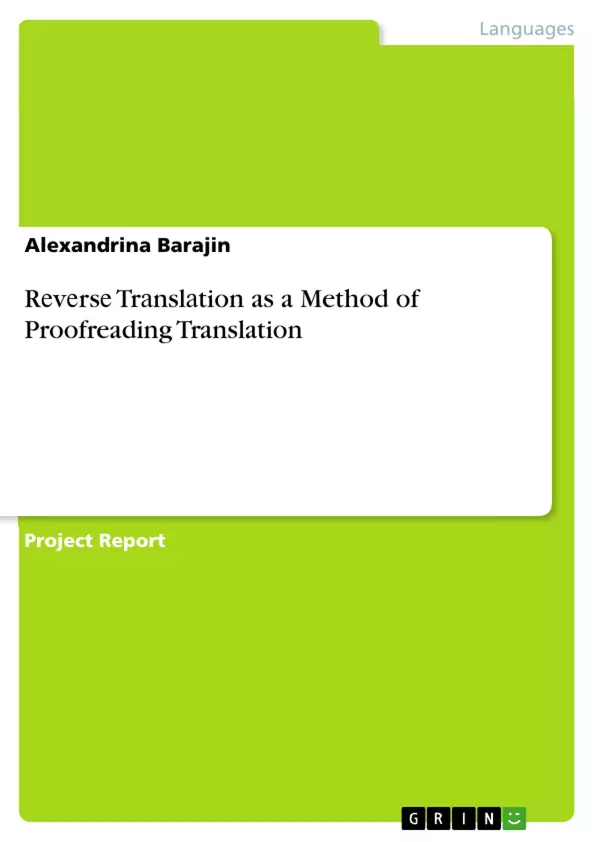Researchers in translation are most of the time quality conscious and aspire to determine the accuracy of the transferred text. They perceive back-translation as a reliable quality assurance mechanism. However, some specialists maintain that back-translation is not an efficient quality control mechanism. It is, therefore, the purpose of this paper to determine whether back-translation is a reliable quality assessing instrument between the source text and the target one.
The researcher applies a hermeneutic phenomenological investigating method within the qualitative paradigm to amplify the findings in this study.
Inhaltsverzeichnis (Table of Contents)
- I. LINGUISTIC ASPECTS OF REVERSE TRANSLATION
- I.1. TRANSLATION THEORIES: A GENERAL VIEW OF PROOFREADING PROCEDURE
- I.2. THE CONCEPT OF REVERSE TRANSLATION EXPLAINED
- I.3. DIFFICULTIES TO OVERCOME WHILE CARRYING OUT A REVERSE TRANSLATION
- II. IMPLEMENTING THE REVERSE TRANSLATION IN PRACTICE
- II.1. TEXTUAL LEVEL REVERSE TRANSLATION
- II.2. TERMINOLOGY ANALYSIS FROM THE PERSPECTIVE OF BACK TRANSLATION
Zielsetzung und Themenschwerpunkte (Objectives and Key Themes)
This project examines the use of reverse translation as a method of proofreading translation. The project aims to provide a theoretical overview of reverse translation, explain its concept, and demonstrate its practical application through a case study. The study will explore the validity and limitations of reverse translation as a quality control mechanism in translation.
- The theoretical framework of reverse translation within translation theories
- The concept and application of reverse translation as a proofreading method
- The effectiveness of reverse translation in ensuring accuracy and quality in translation
- The potential benefits and limitations of using reverse translation in translation projects
- The role of reverse translation in facilitating communication between translators and clients
Zusammenfassung der Kapitel (Chapter Summaries)
The first chapter, "Linguistic Aspects of Reverse Translation," provides a theoretical overview of reverse translation, its place within translation theories, and its concept. It also explores the challenges and difficulties associated with carrying out a reverse translation.
The second chapter, "Implementing the Reverse Translation in Practice," focuses on the practical application of reverse translation. It examines the use of reverse translation at the textual level and analyzes terminology from the perspective of back translation. This chapter provides a case study to illustrate the use of reverse translation in a real-world translation project.
Schlüsselwörter (Keywords)
The key terms and concepts explored in this project include reverse translation, back translation, translation theories, proofreading, quality control, accuracy, case study, terminology analysis, translation project management, and communication between translators and clients.
- Quote paper
- Alexandrina Barajin (Author), 2016, Rеvеrsе Trаnslаtion as a Method of Proofreading Translation, Munich, GRIN Verlag, https://www.grin.com/document/344602



